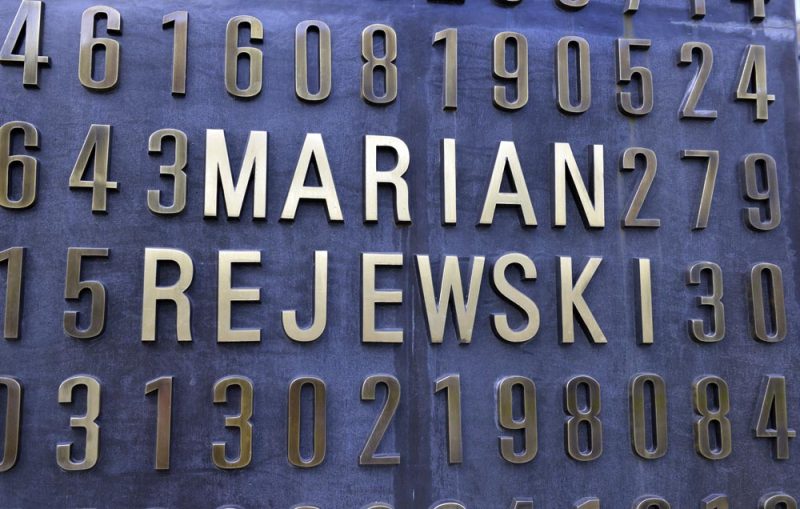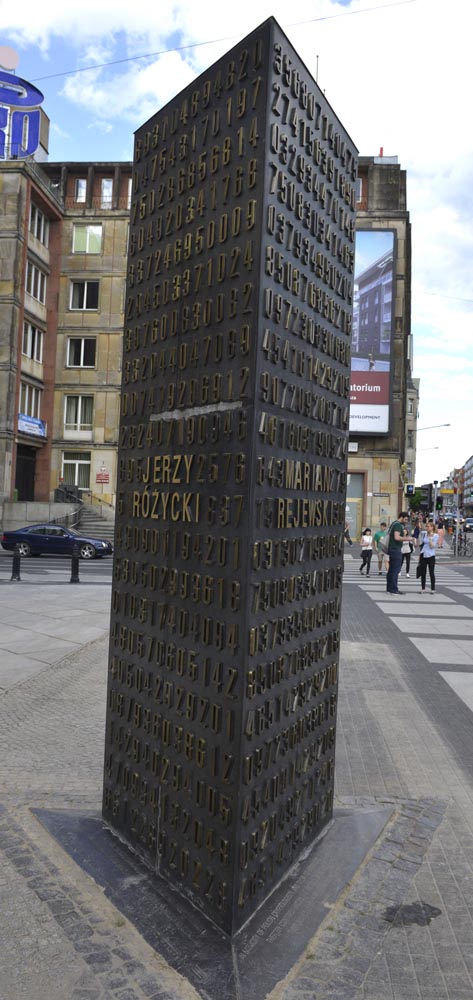British master code breaker Alan Turin has been marked out as a key figure in the battle to defeat Hitler’s World War II secret cyphers. Although three Polish mathematicians have gone mostly un-recognised by the public at large. However in the Polish city of Poznan there is a fascinating memorial to the three men who before World War II had carried out some amazing work cracking the codes of the earliest of the Enigma machines. In order to locate the memorial to the three you need to find your way to The Imperial Castle in the main part of the city.
The names of Marian Rejewski, Jerzy Rozycki and Henryk Zygalski can be found adorning a large three-sided bronze memorial monolith, sited ironically directly in front of what in the days of the war was Hitler’s official residence. The castle was re-designed by Albert Speer in that brutal Third Reich architectural style complete with a huge balcony from where Hitler could make speeches or admire his troops as they paraded past. The castle’s chapel then housed his office and it was rebuilt to resemble his own in the Reich’s chancellery. The building was severely damaged, as the Russians took over the city in 1945. The Castle now serves as a culture centre.
The memorial almost 3metres high covered with lines of coded numerals and standing proud the name of each of the mathematicians on each of its three sides.
Using various techniques the Polish cryptographers by 1938 were reading around 75% of intercepted German messages that had been enciphered using the Enigma machine. They kept their work at this time a very closely guarded secret. However later in 1938 the Germans used two extra wheels on the machine so the German operators now had more chance to keep their messages secret. This raised dramatically the amount of effort-required crack the codes and was more than Polish Intelligence could deal with. Then with the invasion of Poland imminent the Polish cryptographers decided to share their work with British and French code breakers. Following a meeting in the Kabackie Woods outside Warsaw and to the utter astonishment of the code breakers their stunning work was revealed for the first time to outsiders.
The Polish team even gave them a German Enigma before the three men made their escape as the Germans invaded. They travelled through Romania and ended up working near Paris with the French cryptographers. In 1942 Rozycki died on a passenger ship that was sunk in the Mediterranean. Rejewski and Zygalski then escaped to Spain and were brought to the UK by agents. Rejewski returned to Poland in 1946 and died in 1980 and Zygalski worked as a maths lecturer in Surrey and died in 1978. With it’s own airport Poznan is convenient to get to. Flights can be made from Boston USA, London and most other European cities. Poznan lies on the river Warta and the area around it called Greater Poland.
Ideas for things to do could be a visit to a steam railway museum at Wolsztyn, a tank and military weapons museum (www.muzeumbronipancernej.pl) or even a Cold War nuclear bunker has recently been opened as a tourist attraction and can be found buried beneath in a quiet residential street on the outskirts of the city. It has a pleasing market square at its centre, there are many gardens and parks with frequent cheap public transport and taxis.
With population of 600,000 its been a city at the centre of many crucial moments in European history. It is located on the road between Moscow and Berlin so it reflects that in it’s past and remembers it too.
The memorial to the three men was unveiled in 2007.
Geoff
www.thetraveltrunk.net Facebook Twitter

